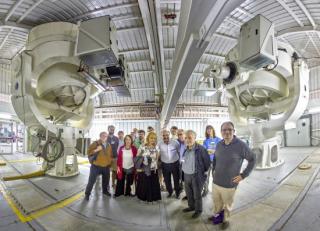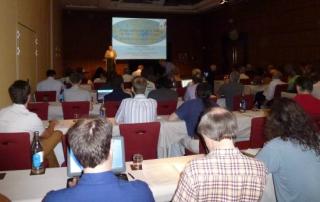
Acompañados por el director y varios investigadores del Instituto de Astrofísica de Canarias (IAC), los participantes en el congreso Philosophy of Cosmology que se celebra en Tenerife accedieron a algunas de las instalaciones científicas, entre ellas el Experimento de microondas QUIJOTE, la Estación Óptica Terrestre (OGS), la Torre Solar al Vacío (VTT) y telescopios de divulgación en el entorno del Laboratorio Solar, una muestra representativa de diferentes telescopios y modos de observación presentes en este observatorio. Instantáneas de la visita al Observatorio del Teide Notas de prensa y
Advertised on



